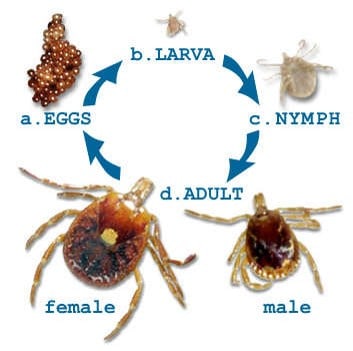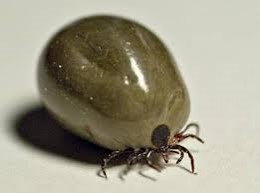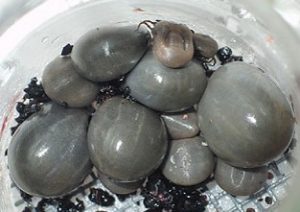
Tick Infestation in Cattle And Its Control – An Overview
Tick Infestation in Cattle
Ticks are the most important external parasites commonly found in cattle and are responsible for severe economic losses both through the direct effects of blood-sucking and indirectly as vectors of pathogens for transmission of the spread of disease. Ticks indirect losses on production and performance are like skin irritation, AnemiaIt is condition characterized decrease in the number of Red blood cells or the haemoglobin concentration than normal., loss of body weight, reduced milk production & disease transmission. Ticks are members of phylum Arthropoda belongs to the class of Arachnida. There are certain species of ticks, which cause severe economic losses to livestock by transmitting disease (Mainly protozoan, rickettsia) from one animal to others. Hence ticks are termed as major vectors for transmission of diseases.
Cattle ticks can be seen at any time of the year, but mostly during warmer & wetter parts of the year. The presence of ticks has been found on body parts like below ears, between two legs, near tail & base of the udder. It is said that a single female engorged tick is imposed a daily loss of 0.5–2 ml of blood, 8.9 ml of milk and 1 g of body weight
Classification: Ticks are divided taxonomically into two families as follows:
| Hard Tick (Ixodidae) | Soft Tick (Argasidae) |
 |
 |
- Hard Tick (Ixodidae): The mouthparts are clearly visible. Body dorsoventrally flattened & possesses a marginal outline, which tapers towards anterior parts. They have a sclerotized dorsal plate (Scutum).
- Soft Tick (Argasidae): The soft ticks have an oval or pear-shaped outline with anterior body region broadly rounded. The mouthparts are not visible. The body is granulated & leathery appearance.
The life cycle of Bovine Tick:
There are four stages in lifecycle of cattle tick like a)Egg b) Larva c) Lymph d) Adult

The cattle tick spends the parasitic stage of its life on the one host. This stage takes approximately 21 days during which time the tick changes from a minute larva to a nymph and finally an adult. Adult females feed slowly for about a week, filling rapidly with blood at the end of that time. They then drop onto pasture, lay up to 3000 eggs and die. Eggs then hatch to produce larvae, which then infest the pasture until picked up by a suitable host or eventually die.
Classification of Tick on the basis of life cycle:
1. One-host tick: Cattle tick is mostly one host tick as all the lifecycle stages complete on one host. This type of tick remains on one host during the larval and nymphal stages, until they become adults, and females drop off the host after feeding to lay their batch of eggs.
2.Two-host tick: Some ticks feed on two hosts during their lives and are called two host ticks. This type of tick feeds and remains on the first host during the larval and nymphal life stages, and then drops off and attaches to a different host as an adult for its final blood meal. The adult female then drops off after feeding to lay eggs.
3.Three-host tick: Many ticks feed on three hosts, one during each life stage, and are appropriately named three host ticks. These ticks drop off and reattach to a new host during each life stage, until finally the adult females lay their batch of eggs. All stages drop off the host prior to molting, next stages need to seek.
Harmful effects of Ticks on Cattle Health:
Ticks cause direct or indirect effects on cattle health, production & performance. Following are common effects of ticks on cattle
- Skin irritation
- Reduced milk production
- Alopecia
- Anemia
- Loss of body weight
- Disease spread/transmission like Babesiosis, Theileriosis, Anaplasmosis
Methods of controlling tick Infestation in Cattle:
There are several methods being applied for controlling ticks and tick-borne diseases. The Control of tick infestation in cattle through the use of chemical acaricides is one of the best methods routinely used. A wide range of acaricides, including chlorinated hydrocarbons, organophosphates, carbamates and synthetic pyrethroids are being used for controlling ticks on livestock. The performance of an AcaricideAcaricides are the insecticide preparation that kills ticks in livestock. in the control of ticks depends not only on the activity of a product, but on the quality and quantity of active ingredient applied on cattle body. The route or way of application also plays important role in proving efficacy and safety of product.
Currently in the veterinary market, there are various preparations available for control of ticks in cattle on the basis of route of application.
- Dip and Spray formulations (EC-Emulsifiable concentrate): These preparations need to apply or spray on whole body after diluting in water. This is a Conventional/old method routinely used from many years in field conditions. The common market preparations are Cypermethrin, Deltamethrin and Amitraz etc. Dips and spray are suitable for treating large numbers of animals. The efficacy of manual spraying depends on the person applying it and type of dilution followed
- Pour-on formulations: This is a comparatively new and convenient way of application with less harmful effects and providing better efficacy. There is no need for dilution and spraying on whole body. Pour-on preparations need to apply directly evenly along the midline of the back from the front of the shoulder to the base of the tail. The common market pour-on preparations contains Flumethrin alone and Flumehtrin+Piperonyl Butoxide (PBO) which is also effective against resistant ticks by inhibiting cytochrome P-450. The Benefit of Pour-on Anti-Tick preparations is as follows
- LipophilicIt is the property of the molecule that has special affinity towards lipids/oils. property of molecule has special affinity towards lipids of skin hence Flumethrin gets easily attached with skin surface.
- These preparations kills ticks through Knock Down EffectIt is effect following application of an Acaricide characterized as the state of intoxication and partial paralysis which usually precedes the death of ticks. Pyrethroid insecticides cause knockdown within a few minutes on ticks. This could be because of lethal activity of Flumethrin seems to involve action on both peripheral and central neurons of ticks.

Comparative evaluation between Dip and Spray (EC-Emulsified concentrate) and Pour-On formulations method of tick control:
| Sr. no | Parameters | Dip-Spray (EC formulation) | Pour-on formulation |
| 1 | Application procedure | To be applied on Whole body | To be applied directly as a Line midline of the back from front of shoulder to base of tail |
| 2 | Convenience | Less | Very high |
| 3 | Dilution in water | Needed | Not needed |
| 4 | Animal restraining | Required | Not required |
| 5 | Safety to person/handler | Less | More |
| 6 | Time required for application on body | More | Less |
| 7 | Spoilage while dilution | More | Nil |
| 8 | Efficacy if washed | Reduced | Not reduced |
| 9 | Cost of treatment | Economical | Comparatively higher
(Value for money) |

- Use of Endectocides: Field veterinarians also prefer Endectocides for treatment and control of internal and external parasites that may impair the health of cattle. Injectable drugs like Ivermectin, Doramectin are the member of the macrocyclic lactone class of endecticides also commonly used in veterinary clinical practice for effective management of ticks.
- Herbal Preparations: Natural repellants (herbal option) like neem oil or Neem seed extract may be applied after dilution to repel cattle ticks. The minimum concentration required to be effective against ticks is 1% (10 ml of Neem Oil per litre of water to be dissolved).
The application should be always done against the direction of the hair and should cover the entire body, especially underbelly and legs.
Tick Control in Animal Shed:
- Any newly purchased animal should be completely de-ticked before allowing to mix with other animals.
- Carry out periodic application of acaricide on the animal as per need.
- All cracks and crevices in the cattle shed therefore should be sprayed with a higher concentration of the acaricide along with application on the body to avoid re-infestation. Flaming also can be done using a flame gun if available, with a little bit of caution.
- It is also suggested that Tick infestation of animal sheds can be avoided by plastering all surfaces with smooth cement to block cracks and crevices
- The acaricide group should be changed often to avoid resistance from developing.
- The acaricide should be applied in proper concentration.
- Seek advice from a veterinarian on the appropriate acaricide and its dosage
Dr. Vijay Muley
Head (Marketing)-Veterinary Division
Vetoquinol India Animal Health P. Ltd, Mumbai
